Jeong’s Jjajang: Authentic jjajangmyeon and tangsuyuk cooked by a native Korean at Bukit Merah kopitiam
Growing up, I only had the opportunity to savour Korean food on special occasions at restaurants. Over the years, I’ve seen a rising trend of coffeeshops offering unique cuisine apart from our local delights. A perfect example is Jeong’s Jjajang, who planted their roots at a kopitiam located at Bukit Merah Central on 2 Jun 2022.

The kitchen is helmed by Mr Jeong Jun Seong, who is a native Korean man from Daegu. Before opening up his food stall, Mr Jeong was cooking in a cloud kitchen concept in May 2021, mainly focusing on deliveries and takeaways.
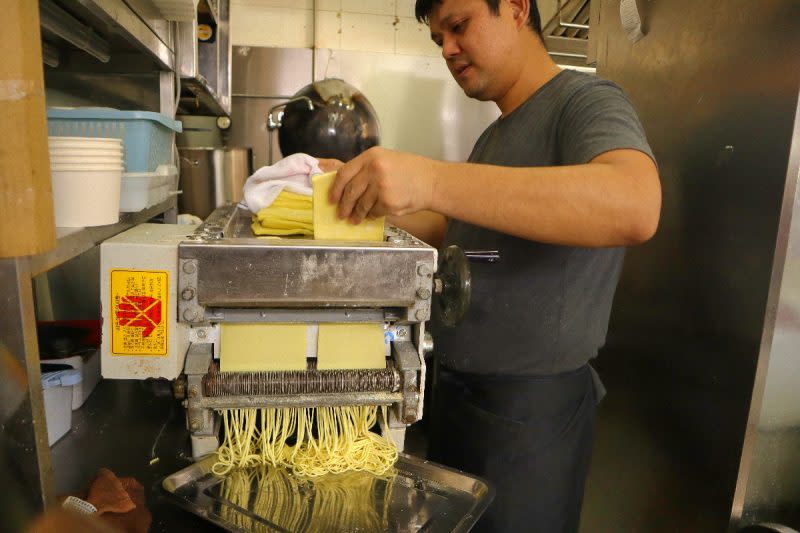
As I arrived at Jeong’s Jjajang close to noon with my dining partners, they were busy preparing for the upcoming lunch crowd. The noodles for the jjajangmyeon and jjampong are made by hand every two days by Mr Jeong himself. The handmade dough transformed into several golden strands of noodles right in front of my eyes. The noodles are only cooked on the spot when orders come in.
What I tried at Jeong’s Jjajang
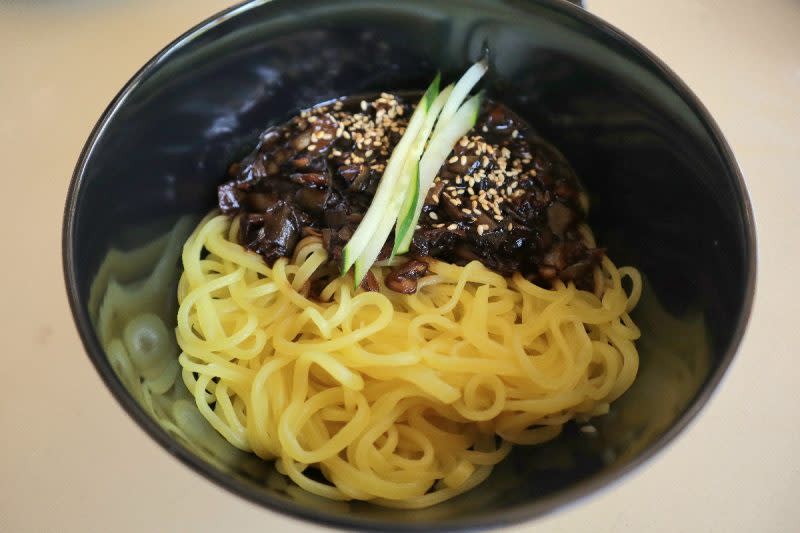
I was excited to try one of their signature dishes, Jjajangmyeon (S$8). It came in a simple bowl which consisted of a bed of handmade noodles, a pile of chunjang (black bean) paste sprinkled with sesame seeds, and shreds of cucumber.

The chunjang paste had a mix of meat and onion chunks as I began to toss the noodles with the Korean metal chopsticks, which I was fumbling with (I’m so bad at using Korean chopsticks). The golden yellow noodles gradually turned into a caramelised shade of brown as the sauce began coating them.
First impressions, I was blown away by the texture of the noodles, which were chewy and had a nice bite. The sweetness from the onions complemented the richness of the meat chunks.
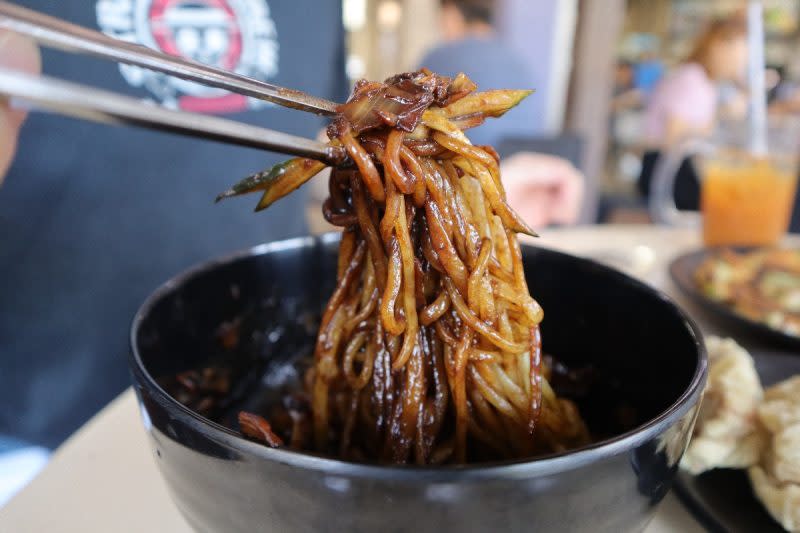
The nutty notes from the sesame seeds and the crunchiness of the cucumber shreds added extra depth to the bowl of Jjajangmyeon. I’ve tried a famous jjajangmyeon in Tanjong Pagar recently with one of my dining partners present today, and both of us agreed that Jeong’s Jjajang’s version beats them hands down!
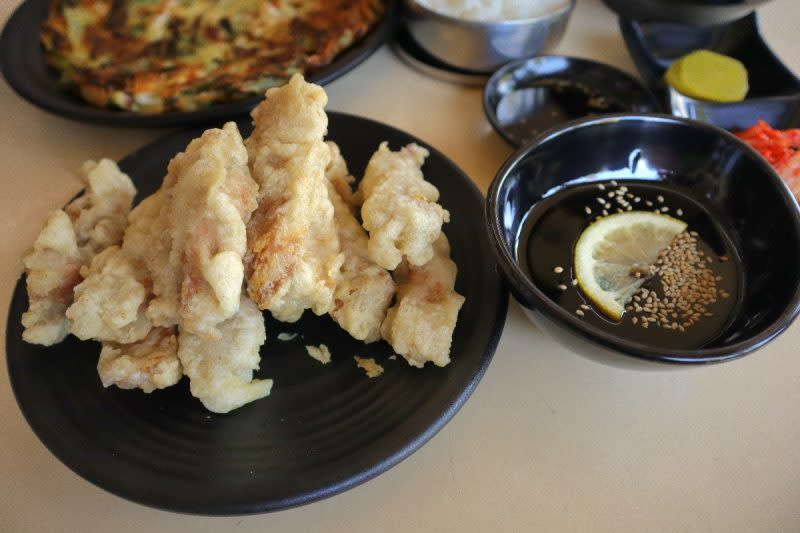
The next dish we tried was Tangsuyuk (S$12), which is the Korean version of our local sweet and sour pork. Pieces of battered fried pork were piled up on a plate while the sauce was served separately.
My other dining partner, Rekha, shared with me that Koreans eat this particular dish in two ways. The first method is to dip the meat in the sauce while the other way is to drizzle the sauce all over the meat. I decided to try out both methods.
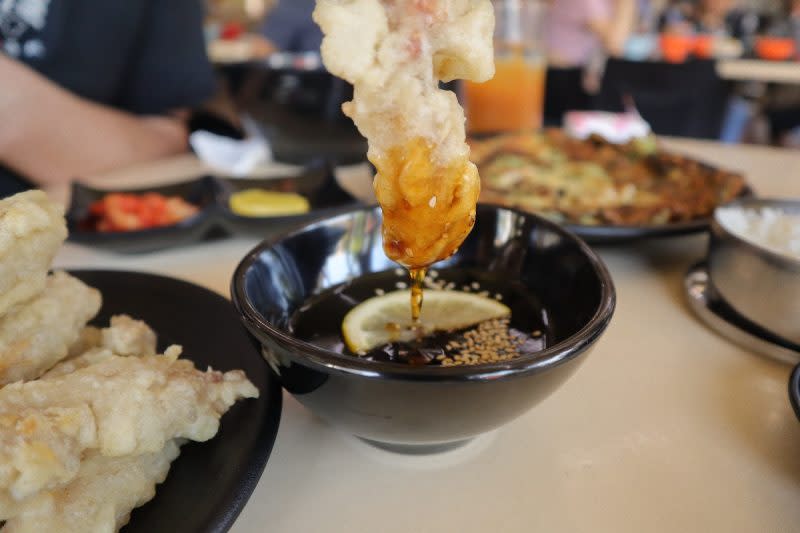
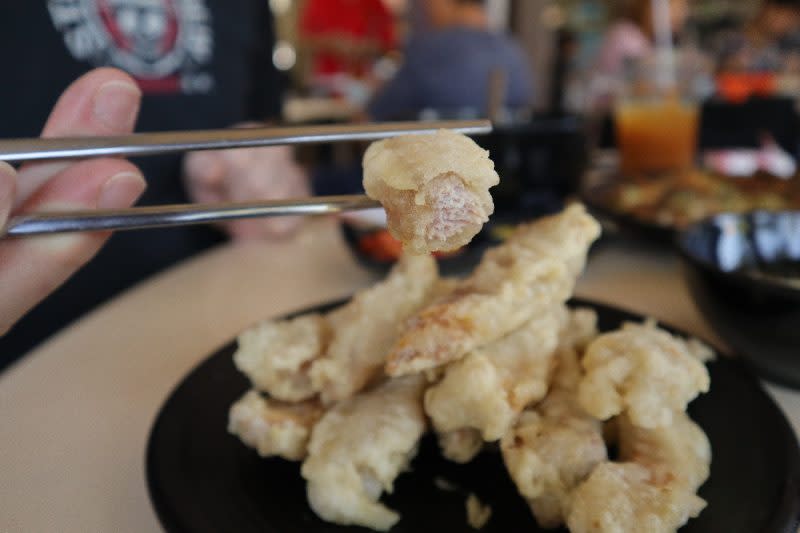
I used my chopsticks to extract out a little juice from the lemon slice and proceeded to dunk the fried pork chunks into the sauce. I could taste sweet hints of honey, which was balanced with the slight sourness coming from the lemon. The meat was tender and had no strong gamey taste. I was pleasantly surprised that the batter still remained crispy even though it wasn’t as hot as when it first arrived.

I drizzled the sauce all over the pork chunks, and suddenly the whole dish looked even more appealing. The battered pork felt more moist, and the sweet and sour flavours of the sauce became more robust using this method.

We moved on to their Seafood Pancake (S$10), and the first thing I noticed was that the edges were more charred in comparison to other ones I tried at other Korean establishments— it seemed more delightful this way! It had pieces of clams and sotong together with slices of spring onion.

The charred bits of the pancake provided a satisfying crunch and smoky taste to the pancake. The seafood wasn’t overcooked, and I loved the slightly browned bits of the spring onions which enhanced the overall taste of the pancake.
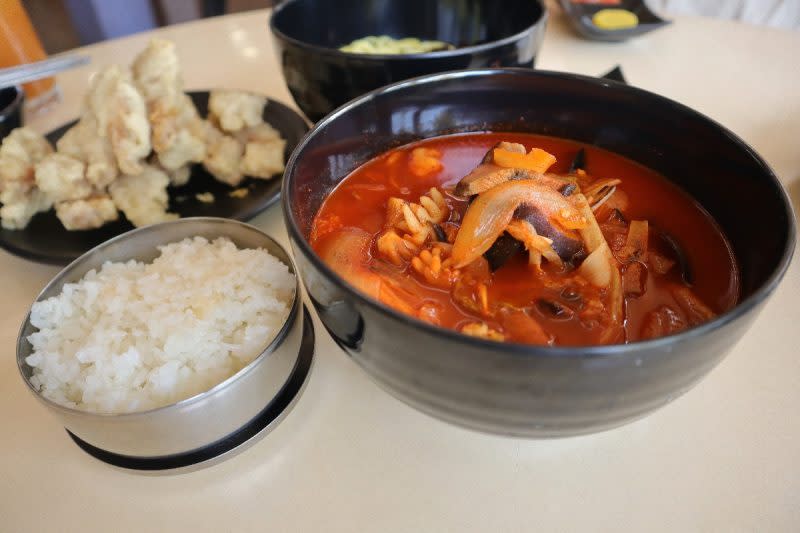
The last dish I had was Jjampong Rice (S$11). Typically jjampong is a Korean dish served with noodles but I’m glad that Jeong’s Jjajang had a rice option as well. For those who have a poor tolerance for spicy foods, they even offer Baekjjampong Rice (S$11) which is a non-spicy version.
The Jjampong Rice came in a traditional Korean metal bowl with a lid for the rice, and a bowl containing a fiery-looking broth which had black mussels, sotong, prawns, onion slices, mushrooms, cabbage, carrots and leek in it.

I recalled a scene in a Korean show that I watched years ago, where the actor poured his rice into the soup— I did the same thing. For locals like us, we’re so accustomed to pouring our soups over the rice. It’s interesting to know the differences in eating habits across different countries.

The rice was slightly chewy in texture and the spiciness came to me almost immediately with an impact. I found out that Jeong’s Jjajang uses Japanese short-grain rice, which somehow managed to soak up the spicy broth better than regular rice does.

The flavourful broth was satisfying with strong hints of Korean Chilli powder, which paired really well with the fresh seafood, sweet onions and smokey mushroom slices— great for a cold, rainy day.
Final thoughts

With such authentic Korean fare available at a coffeeshop, we no longer need to patronise a restaurant just to satisfy our Korean food cravings. For residents of Bukit Merah and those working nearby, Jeong’s Jjajang is currently running a Weekday Lunch Promotion (Mondays to Fridays only, 11.30am – 2.30pm), where you can order a combination of 2 dishes, like Jjamjjamyeon and Tangsuyuk for S$19.90 instead of S$22.
Pay a visit to Jeong’s Jjajang and get a taste of Korea without having to purchase an air ticket.
Expected damage: S$8 – S$20 per pax
Other articles you might like:
Phat Jack: Korean-owned hawker with juicy fried chicken & thick burgers in One Punggol Hawker Centre
The post Jeong’s Jjajang: Authentic jjajangmyeon and tangsuyuk cooked by a native Korean at Bukit Merah kopitiam appeared first on SETHLUI.com.


